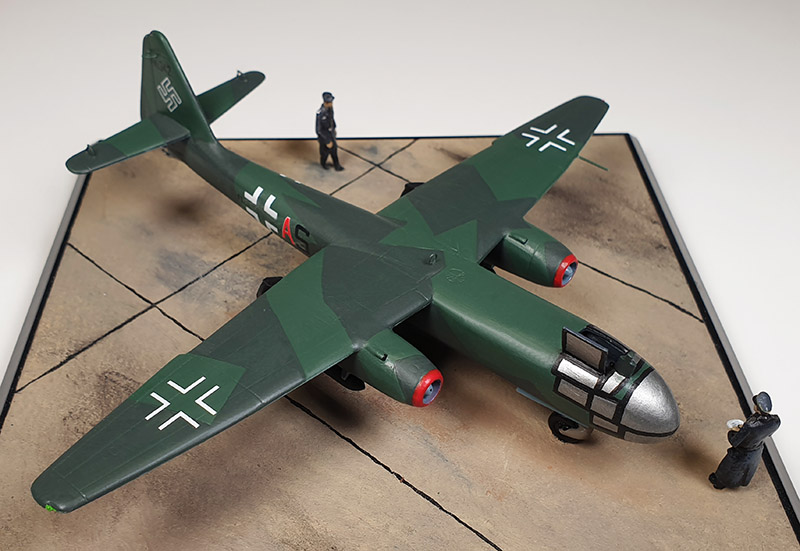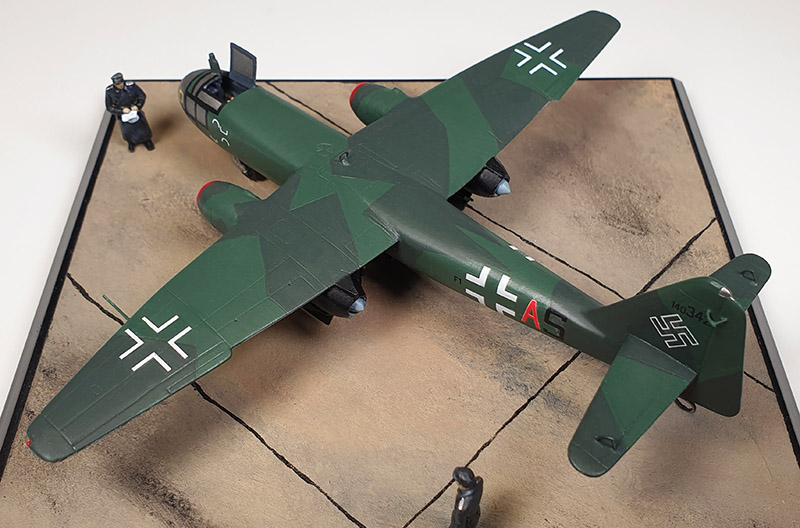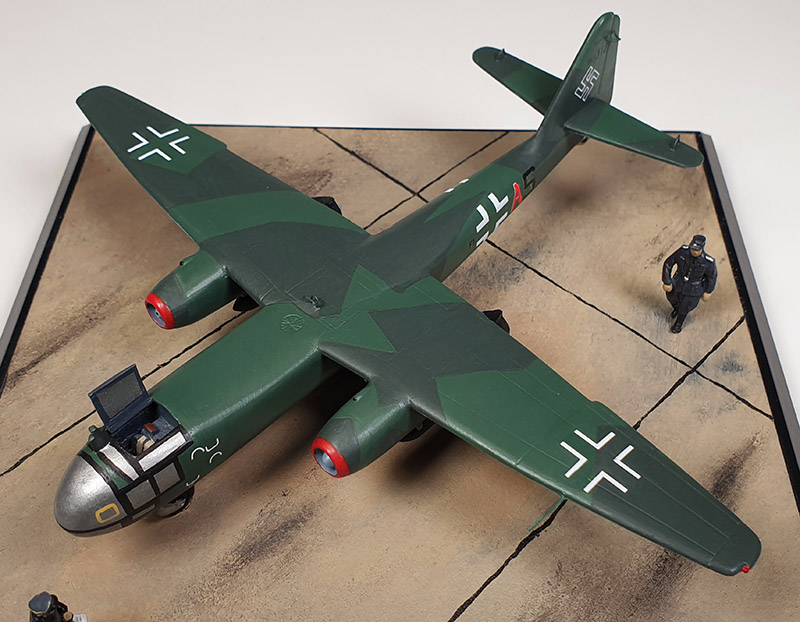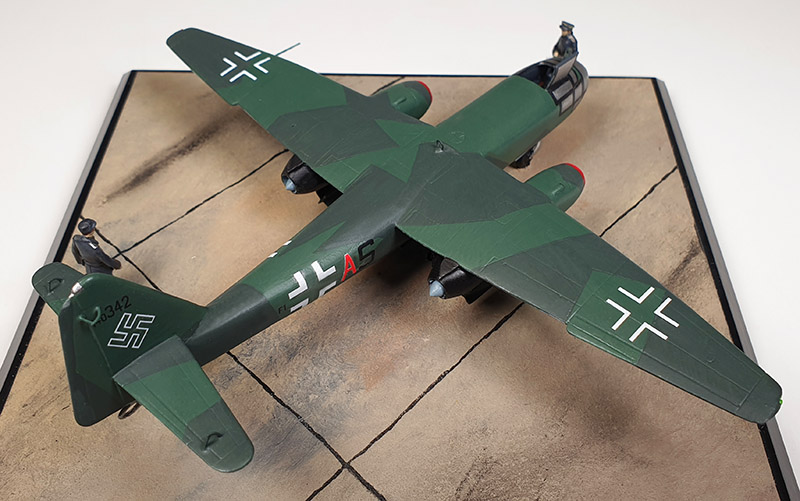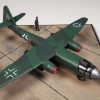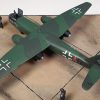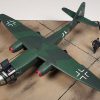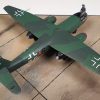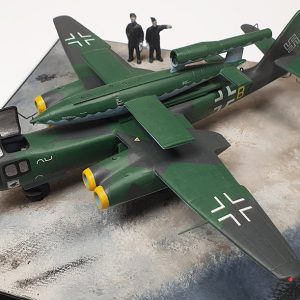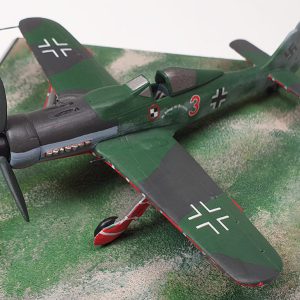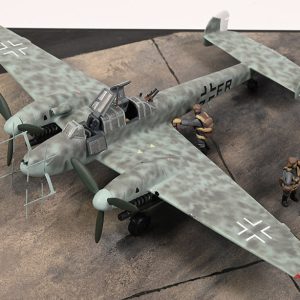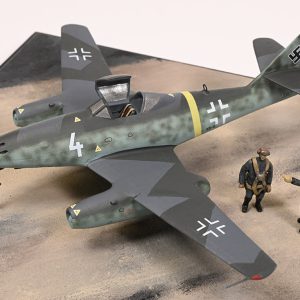Arado Ar 234B-2 Wk.Nr. 140342 F1+AS
Ofw.Friedrich Bruchlos, 8./KG 76 Remagen 9th March 1945.
The genesis of the Arado Ar 234B-2 was a study started by the company at the request of the Reichsluftministerium in the autumn of 1940 in to a medium-range reconnaissance aircraft to be powered by the new jet engines being tested by BMW and Junkers. Of several designs submitted that chosen for development, the E 370, was a relatively conventional design which offered rapid airframe development, and it was allocated the designation Arado Ar 234.
The Ar 234 was designed as a single-seater, keeping the weight to a minimum to achieve the required range and to this end the first examples did without a conventional undercarriage, taking off on a jettisonable trolley and landing on skids. The first prototype flew on the 15th of June 1943 with Junkers Jumo 004A engines; as with all German jet development the provision of the engines lagged behind the airframes, and was the pacing item in any progress. The first pre-production aircraft flew on 8 June, two days after D-Day, and an operational test unit was formed in late September in North-West Germany to undertake reconnaissance missions over South-East England to give warning of any potential invasion of the Netherlands. In October the first examples of the Arado Ar 234B-2 bomber version were delivered to the Stabs-Staffel of Kampfgeschwader 76; II./KG 76 flying from Achmer and Rheine made several pinpoint attacks on Allied forces in the Ardennes in December 1944 and January 1945, by when I./KG 76 and III./KG 76 were working up to operational status though neither ever achieved full strength before the end of hostilities.
During the Allied crossing of the Rhein the sustained attacks on the bridge at Remagen included operations by II and III/KG 76. On the afternoon of the 9th of March the first bombers involved were a pair of Ar 234s carrying SC 250 bombs; that flown by Ofw. Friedrich Bruchlos of 8./KG 76 was hit by ground fire from 634th AAA AW Battalion, US Army, the crew being that of Number 2 Gun of the First Platoon of Battery B, based at Erpel. The aircraft crashed in German-held territory and its wreck was discovered and identified by aviation historian Werner Girbig in 1975.


